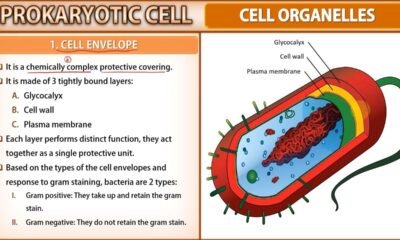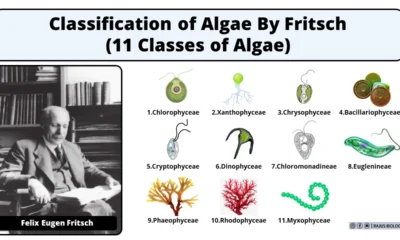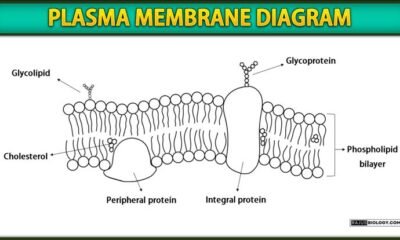Blog
Sclerenchyma Tissue Characteristics, Types and Functions | Free Biology Notes

This article we will discuss about Sclerenchyma Tissue Characteristics, Types and Functions
Sclerenchyma Tissue Characteristics
- Sclerenchyma are dead mechanical tissues occurring in mature organs of plant body
- Cells of sclerenchyma are long, narrow, thick walled, lignified without protoplasts
- Pits are also found. It may be simple pits or bordered pits
- Found in cortex, pericycle, xylem and phloem region
- Main function is provides mechanical support to plant organs
- Based on size and shape sclerenchyma cells are of two types:- Sclerenchyma fibres and Sclereids
Sclerenchyma fibres
- Fibres are longest cell in higher plants. 13mm in angiosperm and 28mm in
- gymnosperms i.e. Boehmeria nivea (55cm)
- Walls of fibres are lignified, hard, uniformly thickened with pointed ends
- They have simple pits as well as bordered pits
- Fibres are associated with vascular bundles
- Their cell lumen is very narrow
- They are present in almost all plant parts
- Main function is provide mechanical support in plants
Classification of fibres: based on structure
Libriform Fibres
- Mainly obtained from phloem
- They are also obtained from pericycle
- Libriform Fibres are thick walled and very much long fibres
- They are having narrow lumen
- They have simple pits
Fibre Tracheids
- They are thick walled and short fibres
- They are obtained only from xylem
- They have bordered pits
Classification of fibres: based on position
Surface fibres
- Surface fibres are found on the covering of seed, leaves or fruits
- They are economically very important
i) Seed Surface fibre (Cotton fibres)
- They are found on surface of seed coats
- Cotton fibres are made of cellulose
- They are non-lignified fibres and hence they are called false fibres
- Cotton fibres two types
- Lint – Very long and used in clothing
- Fuzz – Small and used in filling
ii) Coir Fibres (coconut)
- Obtained from the mesocarp of coconut
- They are lignified fibres and hence are true fibres
iii) Leaves Fibre (Pineapple)
- The leaves of pineapple are used to make the fibre
- The fibre from the leaves is obtained either by manually retting the leaves under water or by mechanically extracting them
Classification of fibres: based on position
Intraxylary fibres / Wood fibres
- They are associated with the primary and secondary xylem
- They are hard and non flexible
- They cannot knitted
- Commercially and economically not so much useful
- Ex. Saccharum munja
Extraxylary Fibres / Bast Fibres
- They are associated with the tissues outside the xylem (like phloem, pericycle and pith of a plant cell)
- They are soft fibres and flexible
They can be knitted and economically very useful - Fibres obtained from phloem of
- Corchorus capsularis (Jute)
- Crotalaria juncea (Hemp fibre)
- Fibres obtained from pericycle
- Cannabis sativa (Hemp)
- Linum usitatissimum (Flax Fibre)
Sclerenchyma:- sclereids
- Sclereids are short, extremely thick walled and their ends are not pointed
- Sclereids are various shaped and very small lumen
- They generally found in hard parts of the plant
- The sclereids provide mechanical support and hardness
- Sclereids are classified into five types
Types of sclereids
I. Brachysclereids / Stone Cells / Grit Cells
- Appearance: Deeply resemble parenchymatous cells and are roughly isodiametric
- Occurrence: It is commonly present in the fleshy portions of fruit
- Example: Flesh of pear fruit, sapota & Annona
II. Macrosclereids / Malpighian Cells / Rod Cells
Appearance: Elongated and columnar in shape
Occurrence: Found in the outer epidermal cells of seed
Example: Seed coat of Pisum species
III. Osteosclereids / Bone cells / Pillar Cells / Prop Cells
Appearance: These are bone like sclereids with lobed towards the end
Occurrence: Usually found below the epidermal layer, i.e. hypodermis of seeds and leaves of certain plants belonging to the Xerophytes category.
Example: Leaves of Hakea species.
IV. Astrosclereids / Stellate cells
Appearance: They appear star-like and deeply lobed with the radiating arms from the central body
Occurrence: Extends from the leaves upper epidermis to the lower epidermis.
Example: Leaves of Thea, Olea, Nymphaea etc
V. Trichosclereids (Needle-like cells)
Appearance: They seem hair-like, more elongated, and branched cells stretching towards the intercellular spaces.
Occurrence: Present in specialized tissues of leaves and roots
Example: Aerial roots of Monstera sp, leaves of olive, musa and water-lily etc.
VI. Filiformsclereids (Fibre-like cells)
Appearance: They are much elongated, sparingly-branched & uncommon kind of a cell.
Occurrence: Found in the specialized tissues of leaves.
Example: Leaves of Olea

 Blog7 months ago
Blog7 months ago[PPT] Human Reproduction Class 12 Notes
- Blog7 months ago
Contribution of Indian Phycologists (4 Famous Algologist)
- Blog7 months ago
PG TRB Botany Study Material PDF Free Download

 Blog7 months ago
Blog7 months agoCell The Unit of Life Complete Notes | Class 11 & NEET Free Notes

 Blog7 months ago
Blog7 months ago[PPT] The living world Class 11 Notes

 Blog7 months ago
Blog7 months agoClassification of Algae By Fritsch (11 Classes of Algae)

 Blog7 months ago
Blog7 months agoJulus General Characteristics | Free Biology Notes

 Blog7 months ago
Blog7 months agoPlasma Membrane Structure and Functions | Free Biology Notes














